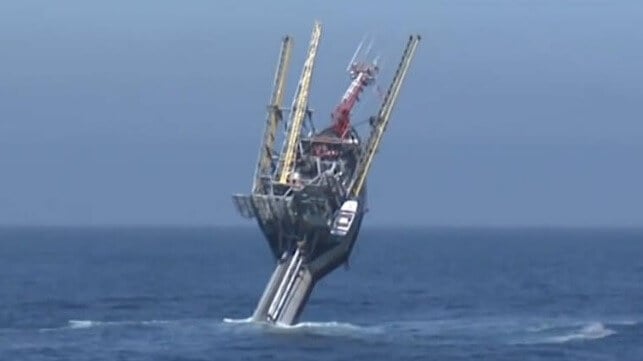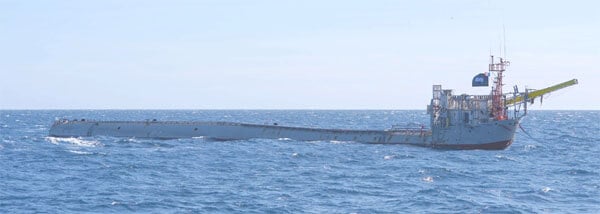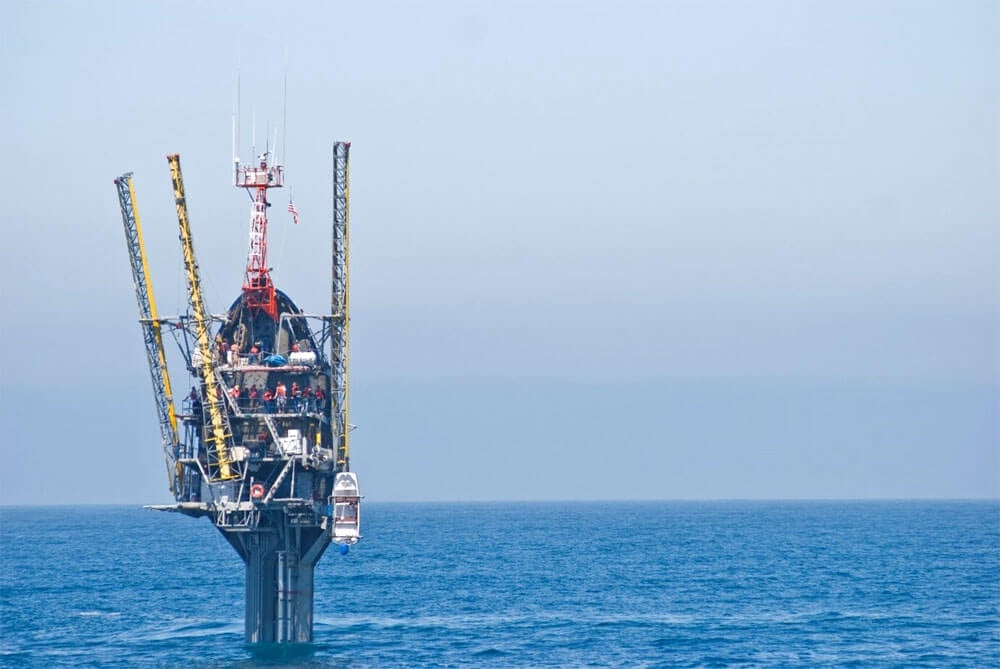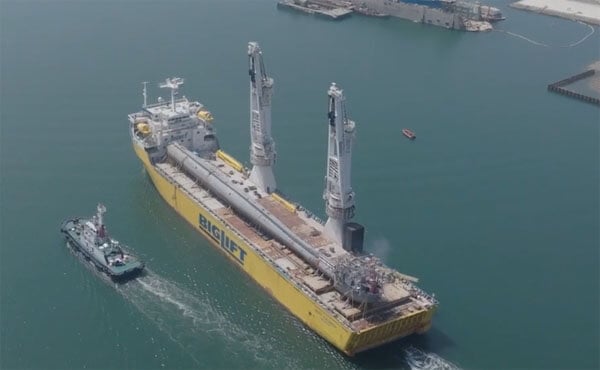World's Strangest Research Vessel Saved from Scrappers to “Flip” Again

The iconic Floating Instrument Platform, known as “FLIP” because of its unique capacity to operate in either a vertical or horizontal configuration, has been saved from scrapping and is now in France where it is being modernized to start a new phase of its research missions. The vessel/platform was developed for the U.S. Navy’s Office of Naval Research and operated for nearly 50 years by the Scripps Institution of Oceanography.
UK firm DEEP, a subsea design firm seeking to develop underwater human habitats, reports it acted quickly after learning that FLIP had been decommissioned and towed to Mexico last year to be dismantled. DEEP founder and CEO Kristen Tertoole assembled a team and sent them to Mexico with the instructions, “Save her. Don't come back without her.”

FLIP is in a horizontal position to be moved and position for its research (Scripps Institution of Oceanography photo courtesy of DEEP)
The one-of-a-kind vessel (technically a platform) which is 355 feet (108 meters) in length was commissioned in 1962 and decommissioned in 2023. It could be partially flooded to sink the stern and change the orientation of its buoyancy. Systems aboard the vessel were designed to rotate 90 degrees and operate in either configuration. By design, FLIP was minimally affected by ocean swells, and it provided scientists with an extra-stable, extra-quiet platform for sensitive experiments.
In less than an hour, it could transition seamlessly from a horizontal barge for transit into a vertical spar platform for stationary operation. To refloat from vertical to horizontal mode, the crew would pump out the ballast tanks with compressed air, and the vessel's stern would rise back up to the surface. Using these unique capabilities, they report the vessel made amazing contributions to marine science.

FLIP rotates 90 degrees to become a stable research platform (Scripps Institution of Oceanography photo courtesy of DEEP)
“FLIP is an iconic research platform – anyone in the maritime research or engineering communities knows about her, and many have a war story or two. We're incredibly proud to confirm FLIP's arrival in European waters,” said Tertoole.
The first challenge was getting the decommissioned vessel from Mexico to France for the refit. They used a specially designed lift and placed it on a heavy-lift vessel for the more than 6,000-mile journey. The vessel is now at MB92 in La Ciotat, France for a refit projected to last 12 to 18 months.
“I’m delighted by DEEP's decision to revitalize and modernize FLIP, a unique research platform that has served the ONR exceptionally well for years,” said Dr. Tom Drake, ONR Ocean Sensing Battlespace Department director. “This modernization initiative will significantly expand her capabilities in ocean science, observation, and exploration, breathing new life into a vessel that has been vital to our mission.”

FLIP was loaded aboard a heavy-lift vessel for transport from Mexico to France (DEEP)
The plan calls for removing the 1960s superstructure from the vessel and replacing it with lighter-weight materials and modern technology. This will reduce weight giving the platform the capacity for more people and new scientific equipment. DEEP plans to install new sensors and add AUVs to increase the research capabilities.
DEEP highlights that FLIP was built in a time of a time of bold engineering and optimism. They look to harness this in a new generation of research. The plan is to relaunch the vessel in early 2026.
Introducing FLIP, the latest addition to the DEEP fleet! This remarkable vessel is going to be renovated for modern oceanic research and will be operated by DEEP. FLIP can flip from a horizontal to a vertical position, sinking more than 90 metres of its length underwater!#FLIP pic.twitter.com/UKl4m98aOl
— DEEP (@UnumSumusMare) October 23, 2024
